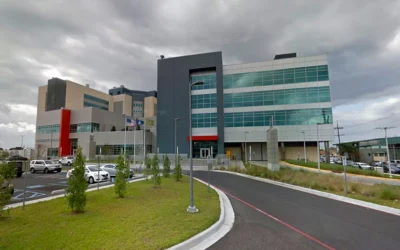Introduction
As climate change accelerates the onset of extreme weather events across the United States, cities in the Northeast, particularly Buffalo and Rochester in New York, are witnessing a pronounced influx of climate migrants. These individuals and families are seeking refuge from increasingly intolerable conditions in other parts of the country. Buffalo, known for its beautiful waterfront and historic architecture, has become a surprising sanctuary for those affected by extreme weather patterns.
Understanding Climate Migration
Climate migration occurs when individuals are forced to relocate due to the direct impacts of climate-related phenomena, such as hurricanes, floods, droughts, and wildfires. The National Oceanic and Atmospheric Administration (NOAA) predicts that by 2030, extreme weather conditions will become more prevalent, intensifying the rate of voluntary and involuntary migration in the U.S.
According to the NOAA, many regions in the Midwestern and Southern United States face an increased risk of heat waves, heavy rainfall, and hurricanes. Consequently, areas such as Buffalo and Rochester are positioned as viable alternatives. The moderate climate of these cities comes as a welcome relief for those fleeing the extremes.
Buffalo’s Climate: A Surprising Asset
Buffalo’s climate is characterized by its variable but often mild weather. While it does experience cold and snowy winters, the summers are pleasant, and extreme weather events are relatively rare compared to other regions. This balance makes Buffalo an appealing destination for families seeking stability amidst the tumult of climate change.
“Buffalo has the kind of weather that precludes the most devastating extremes,” says Sophia Johnson, a climate researcher at Buffalo State College. “While people may think of Buffalo as cold and snowy, the truth is we have a more temperate climate compared to places like the Gulf Coast, which are facing hurricane threats and extreme heat.”
The Economic and Social Landscape of Buffalo
The migration to Buffalo isn’t driven solely by climate but is also supported by the city’s affordable housing, burgeoning job market, and vibrant culture. The high cost of living in much of the U.S. makes Buffalo’s housing market irresistible for new residents. According to Zillow, the median home price in Buffalo is around $175,000, significantly lower than cities like San Francisco or New York City.
Additionally, Buffalo has invested in revitalization projects that encourage community engagement and support local businesses. With these factors combined, people looking to escape harsh climates often find Buffalo an attractive place to settle. Mark D’Angelo, a logistics manager who recently moved to Buffalo from Phoenix, notes, “The housing prices here are much better. I moved here not just because of the weather but also because I could buy a home without breaking the bank.”
Rochester: A Close Contender
Just 70 miles east of Buffalo, Rochester presents a similar allure. The city’s climate is also relatively mild compared to other regions experiencing extreme weather. Rochester has long been known for its rich history in photography and innovation—home to the Kodak company and several educational institutions.
Rochester’s community-centric initiatives and affordable living make it another attractive option for climate migrants. “Rochester is rising in popularity,” says Linda Vasquez, an urban planner in the area. “Many newcomers appreciate not only the reasonable cost of school districts but also the increasingly diverse job market.”
Climate Impacts on Cities
The effects of climate change in cities like Buffalo and Rochester are not completely absent, but they are more manageable than in other areas. For instance, while these locales do experience heavy snowfall, advances in snow-removal technology and infrastructure have made winter more manageable for residents.
Moreover, both cities are preparing for the potential impacts of climate change. This includes enhancing stormwater management systems and increasing investment in green infrastructure. The implementation of urban forestry initiatives aims to create more green spaces, which not only enhance the aesthetic of these cities but also improve air quality and reduce urban heat.
Community Response: Welcoming Climate Migrants
The local response to climate migration has generally been positive. Community organizations and local governments in Buffalo and Rochester have ramped up efforts to create welcoming environments for newcomers. Programs that assist with housing, job placement, and adaptation to the local culture have become increasingly common.
Nonprofits like Urban Choice Academy in Rochester are working to equip families with the support needed to succeed in their new environment. Schools in these cities have also initiated programs to make it easier for migrant children to integrate into academic life, including language support services.
Challenges and Considerations
Despite the welcoming nature of Buffalo and Rochester, challenges remain. The influx of new residents can lead to competition over resources, such as housing and employment. There is also a risk of gentrification, where increased demand for housing could drive up prices, potentially displacing long-time residents.
It’s paramount for local governments and community organizations to address these concerns proactively. Town halls and community meetings could help ensure that the voices of existing and new residents are heard in planning discussions. Strategies focused on sustainable growth and equitable resource distribution will be crucial in preserving the character of these cities while accommodating newcomers.
A Bright Future Amidst Uncertainty
As climate change continues to reshape our world and force migration patterns, cities like Buffalo and Rochester present unique opportunities for climate migrants seeking sanctuary. Their moderate climates, affordable living, and supportive communities are powerful attractions for those fleeing extreme conditions elsewhere.
The future may remain uncertain, but Buffalo and Rochester stand as resilient models of how cities can adapt to changing conditions. Their ability to sustain and attract new residents in the face of climate adversity speaks volumes about their potential to thrive in the coming years.
Conclusion
In conclusion, as climate-driven migration becomes increasingly visible across the United States, Buffalo and Rochester appear ready to meet the challenge. With plans in place to embrace newcomers and a commitment to enduring community values, these cities are well-positioned to lead the way for future climate migrants seeking solace from extreme weather conditions.
While the broader conversation about climate change remains complex and often overwhelming, Buffalo and Rochester shine brightly as examples of hope, resilience, and the capacity to create a welcoming environment for everyone, regardless of their geographical beginning.






